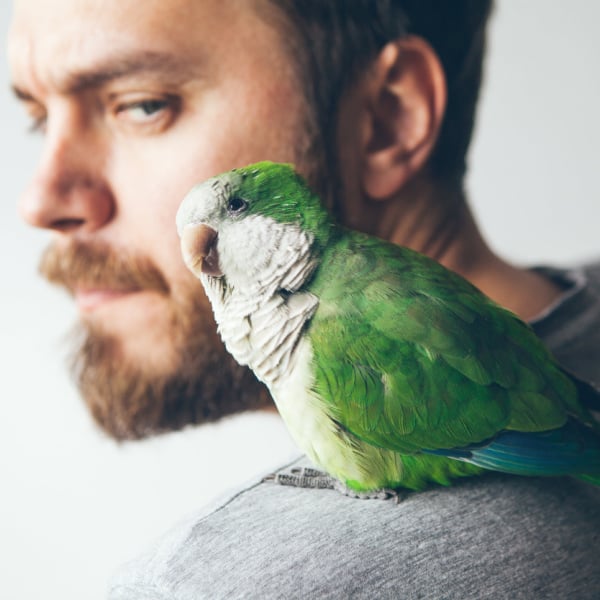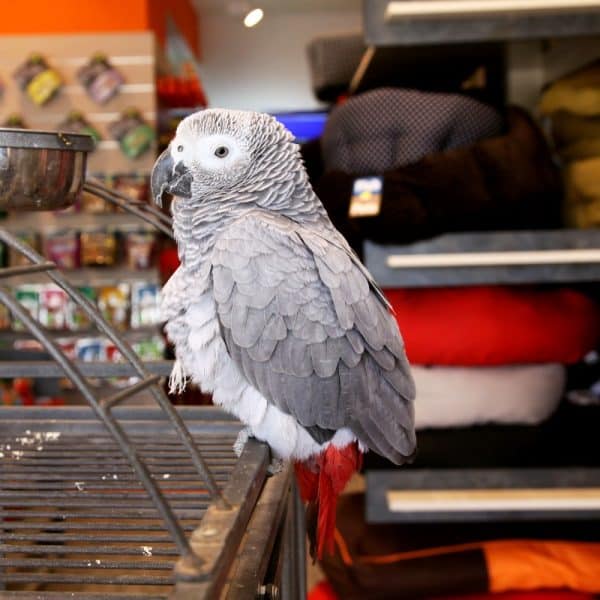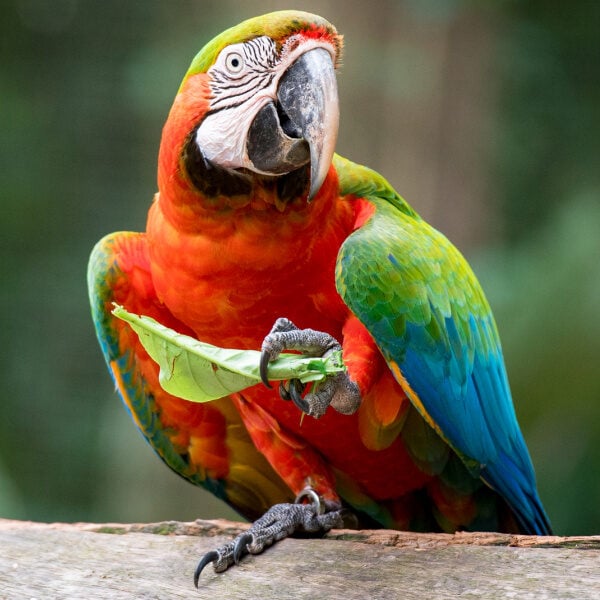Last Updated on by Catherine Tobsing
Yes I have another question for you, my green-cheek conure seems to be molting all the time and he’s lost the two big red feathers in the tail and I can feel the feathers under his skin in between his back and wing feathers is this normal or is he short on calcium he will not touch a cuttlebone or any calcium bone to rub down his nails or beak so I have two perches, that are rough, he is a year and a half old, already really molted.
Thank you very much! Jane
For the record that was an 87-word sentence Jane – Excellent!
Now we need to unravel it.
I’ll work backward starting with asking “how do you know he’s a he?”
If you are positive of his sex via surgical sexing or DNA testing there is no need for supplemental calcium.
We normally provide additional calcium to a brooding hen whose calcium gets depleted rapidly through the production of eggs.
Egg shells are in part made of calcium.
Ironically, eggshells from eggs you buy at the supermarket are a good source of bird calcium
Calcium has nothing to do with feather growth, though (which I think you were implying).
Calcium is used by bones which are hollow in birds making them quite fragile (but enabling flight).
If you want to know how feathers are grown please read:
Feathers are built upon amino acids which are derived from protein.
Your GCC has somewhere between 5000 and 7000 feathers.
Re: “I can feel the feathers under his skin in between his back and wing feathers is this normal?”
I’m not sure what that means unless you talking about the prickly little stubbles pushing out from under the skin which are the PIN feathers.
They represent the initial growth of new feathers pushing out the old feathers during the process of molting.
This article may be helpful in understanding more.
Is it plucking, molting or over-preening? Why are those feathers on the cage floor?
FYI it’s important to be vigilant as new feathers begin to grow out.
A mature feather is a hollow shaft and can be cut with the bird feeling no pain much like cutting human hair.
As new feathers grow out the shafts contain blood which is necessary for feathers to grow.
Sometimes a growing feather breaks, allowing blood to leak out.
You’ll see a large ring of blood around feathers in the area.
It’s important to repair this quickly otherwise your bird can bleed out and die in a short period of time.
We solve this with a pair of needle nose pliers which will be used to literally extract the bleeding feather with a rapid pull of the pliers.
The bird should be washed and the wound looked at to see if bleeding has stopped.
A commercial blood stop works quite well but if none is available sprinkle some cornstarch on the wound and lightly press on it for a minute or two.
That should do this trick.
As for your conure’s perpetual molting issue, all I can do is theorize.
Your bird has 100 million years of instinctual expectations for 12 hours of light and 12 hours of darkness because he is indigenous to South America within 40 minutes of the earth’s equatorial plane.
Unfortunately, he’s living in North America with the light cycles constantly changing and humans making things worse by adding daylight savings time.
So when he’s expecting lights to go down, through the window, at 8 PM 12 months a year he finds that 8 PM sunsets occur in the summer months but in the winter the sun will begin setting around 5 PM.
The amount of light data that birds use to make decisions like molting, breeding and migrating are based in part upon light cycles and intervals interpreted by the pineal gland (we all have one).
This can be corrected by placing a light no higher than 6 inches over the bird’s cage placing it on a timer for 12 hours of light and 12 hours of darkness.
The bird needs to wake up in the cage when the light comes on and placed back in the cage before the light goes out for the night.
This signals the beginning and end of the day which helps synchronize your bird’s circadian rhythms which might also even out his molting cycle.
By the way, some parrots can molt for 18 months straight like Eclectus whereas African grays may molt twice a year and then stop for a while.
In order to move forward this conversation I need to know where your grooming perches are placed in the birdcage, a picture of your cage set up would help.
Also what exactly is your bird’s diet, please be brand specific if you are feeding him food from a manufacturer?
I await to hear from you
Best
MitchR
Gotta comment? We’re here to listen.
Author Profile
Latest entries
 The Traveling BirdJune 26, 2025Can You Name 5 Parrot Species That Are Living Wild in the USA?
The Traveling BirdJune 26, 2025Can You Name 5 Parrot Species That Are Living Wild in the USA? Bird BehaviorJune 26, 2025How is it Parrots Are Problem Solvers Social Animals and Even Use Tools?
Bird BehaviorJune 26, 2025How is it Parrots Are Problem Solvers Social Animals and Even Use Tools? Bird & Parrot AnatomyJune 25, 2025How a Tiny Chemical Modification Makes Parrots Nature’s Living Paintings
Bird & Parrot AnatomyJune 25, 2025How a Tiny Chemical Modification Makes Parrots Nature’s Living Paintings PigeonsJune 20, 2025How Do Parrots Thrive in Cities Outside Their Native Habitats?
PigeonsJune 20, 2025How Do Parrots Thrive in Cities Outside Their Native Habitats?



